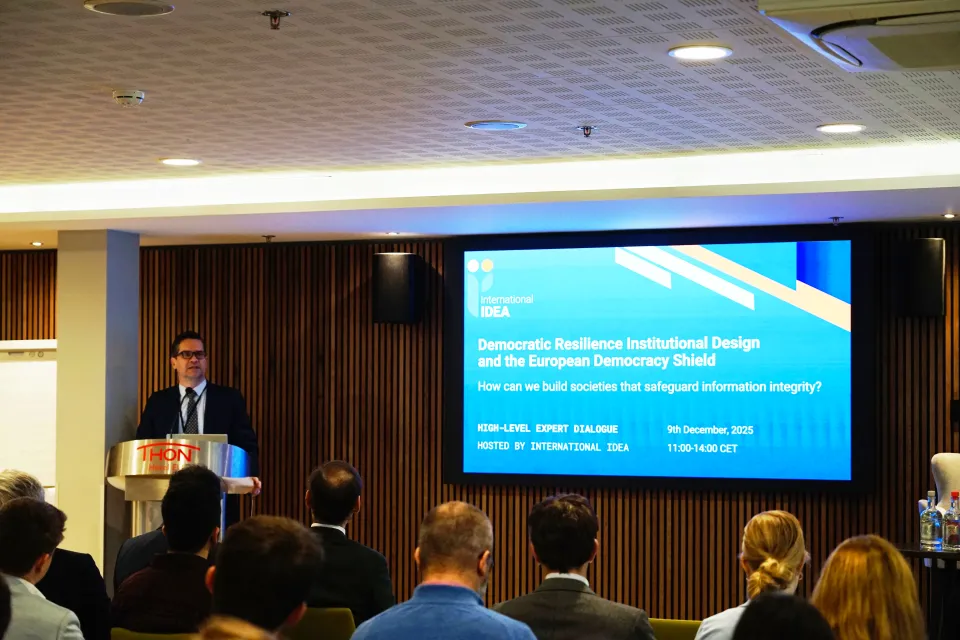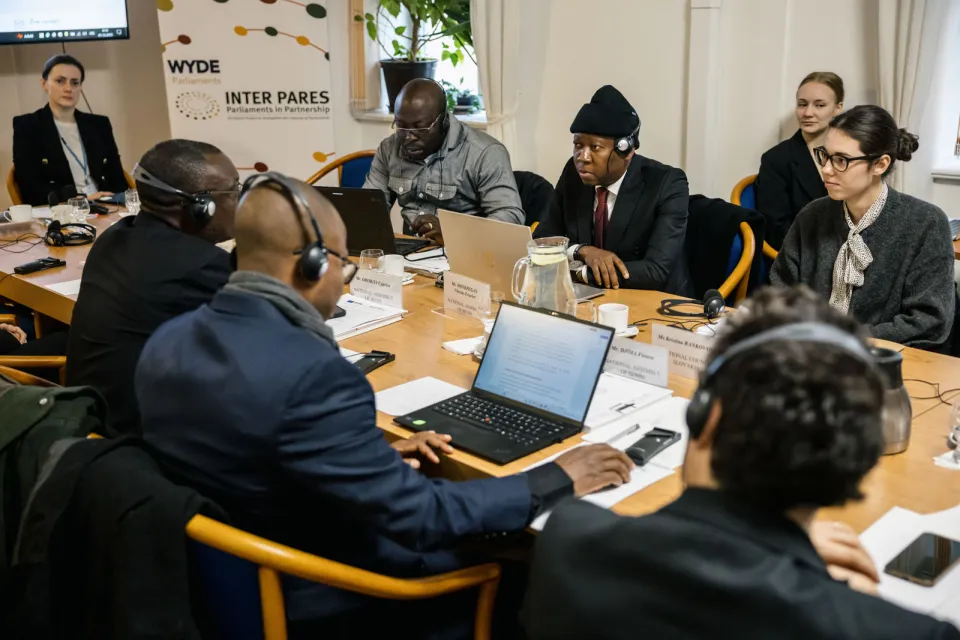Disclaimer: Opinions expressed in this commentary are those of the authors and do not necessarily represent the institutional position of International IDEA, its Board of Advisers or its Council of Member States.
In some of the highest-performing democracies a more accurate term would be stagnation. Feminist scholars and activists like Joni Levenduski and Nancy Fraser have produced decades of argumentation showing how gender inequality – in politics, at the workplace, and in everyday life – persists not in spite of, but because of the nature of the institutions of representative democracy. In their telling, the root of the problem is found in the division in representative democracies between the public and private spheres of life.
As articulated by Jürgen Habermas in 1962, the public sphere is where individuals in a society come together to discuss issues of social importance – it encompasses not only political and governmental institutions, but public debate, mass media, and the like. The private sphere is what it sounds like: the scope of individual’s lives that lay outside this realm: home and family life, and the everyday matter of work and socialization.
So what is the issue? As Fraser put it in a classic response to Habermas,
”This public sphere was to be an arena in which interlocutors would set aside such characteristics as differences in birth and fortune and speak to one another as if they were social and economic peers. The operative phrase here is "as if." In fact, the social inequalities among the interlocutors were not eliminated, but only bracketed.”
The primacy of white, property-owning males in the period when the institutions of representative democracy were formulated results in the reproduction of the social inequalities of their time, and despite stepwise progress throughout the centuries, they continue to inhibit the realization of gender equality in ours. In recent years Levenduski has argued this problem is insurmountable, and that gender equality will not be realized without radical and foundational change, arguing “the entire institutional structure and culture now requires wholescale reengineering if women are to be politically equal.”
But in her response to Habermas back in 1994, Fraser identified a process through which the division between the public and private spheres could be shifted from below. Rather than a single public sphere, Fraser envisions “a plurality of competing publics”, with those democracies whose institutions permit the greatest proliferation of “publics” being the most conducive for the slow progress towards further gender and social inequality. The history of the politics of domestic violence provides an example of what this looks like in practice:
Until quite recently, feminists were in the minority in thinking that domestic violence against women was a matter of common concern and thus a legitimate topic of public discourse. The great majority of people considered this issue to be a private matter between what was assumed to be a fairly small number of heterosexual couples (and perhaps the social and legal professionals who were supposed to deal with them). Then, feminists formed a subaltern counterpublic from which we disseminated a view of domestic violence as a widespread systemic feature of male-dominated societies. Eventually, after sustained discursive contestation, we succeeded in making it a common concern... The point is that there are no naturally given, a priori boundaries here.
For those of us in the field of democracy measurement, Fraser’s vision of a variety of democratic institutions that are more or less amenable to overcoming structural discrimination raises an interesting question. And contrary to democracy indices that Levenduski criticizes for seeing “women [as] afterthoughts, not considered to be fundamental elements of systems of representative democracy”, the GSoDI includes a measure of Gender Equality that is weighted no less equally than the measures of Credible Elections and Effective Parliament. But what more needs to be done to identify which arrangements and institutions might best accommodate the sort of productive contestation Fraser envisions? And are democracy assessment frameworks free of the same inbuilt biases that Levenduski finds in representative institutions?
How do we measure gender equality?
Answering either question requires delving briefly into how the GSoDI's measure of Gender Equality is constructed: its eight data inputs come from five publicly available sources – the Varieties of Democracy Initiative (V-Dem), the Institute for Health Metrics and Evaluation, the World Economic Forum’s Global Gender Gap Report, and the CIRIGHTS Data Project.
Although some statistical data like mean years of schooling differentiated by gender and the percentage of parliament that are women, the bulk of these data points are the result of judgements by country and subject-matter experts. The first problem that arises from expert coding for measures of gender equality is that the expert coder base is overwhelmingly male (70 percent in the case of V-Dem, per its admirably transparent methodology) - a complication inherited from political science departments, which continue to suffer from the same gender imbalance.
While it is encouraging that academic research has found no significant difference in coding on gender-related questions based on gender, the lack of disagreement between coders – who come overwhelmingly from a male-dominated academic discipline - does not mean that a broader subset of experts, laypeople, or especially members of marginalized group would not assess questions of gender and social equality differently. In fact, people of all social classes habitually underestimate economic inequality – but for noneconomic measures, there are no sets of national statistics to turn to resolve doubt.
A second issue is that the datasets that do ask specific questions about gender equality tend to do so within the framework critiqued by Fraser and Levenduski – for example, the measure of gender exclusion that the GSoDI uses[1] asks coders not to consider exclusion that takes place in most “private spaces and organizations.” The measure of women’s ability to participate in civil society organizations[2] asks whether women “are prevented” from participating because of their gender, again excluding any de facto restrictions which prevent women from participating fully in public life from consideration.
Expertise and the everyday
These frameworks may help us to measure some forms of gender inequality – active discrimination and highly visible restrictions on association, for example – but they leave aside that which is reproduced in the home, or other institutions not explicitly considered to be “political” in the liberal democratic tradition. But there are several available approaches that could help take a more granular view of how gender inequality is reproduced in ostensibly egalitarian liberal democracies that do not require throwing the proverbial baby out with the bathwater.
International IDEA’s Perceptions of Democracy Survey (PODS) aims to address this gap in the literature by conducting public opinion surveys that ask ordinary people the same sorts of questions expert-coded datasets ask political scientists. It also targets marginalized people by including an oversample of low-income people, and breaks down responses by ethnicity, gender, and other groups most likely to have been subjected to the consequences of gender and social inequality in a society.
The point of PODS is not to prove expert coders “wrong”, but to provide researchers and policymakers with a more nuanced picture of how gender and social inequality is experienced. The next post in this series will look at how women and men in the 19 countries surveyed do and do not differ in how they perceive and experience democracy.




